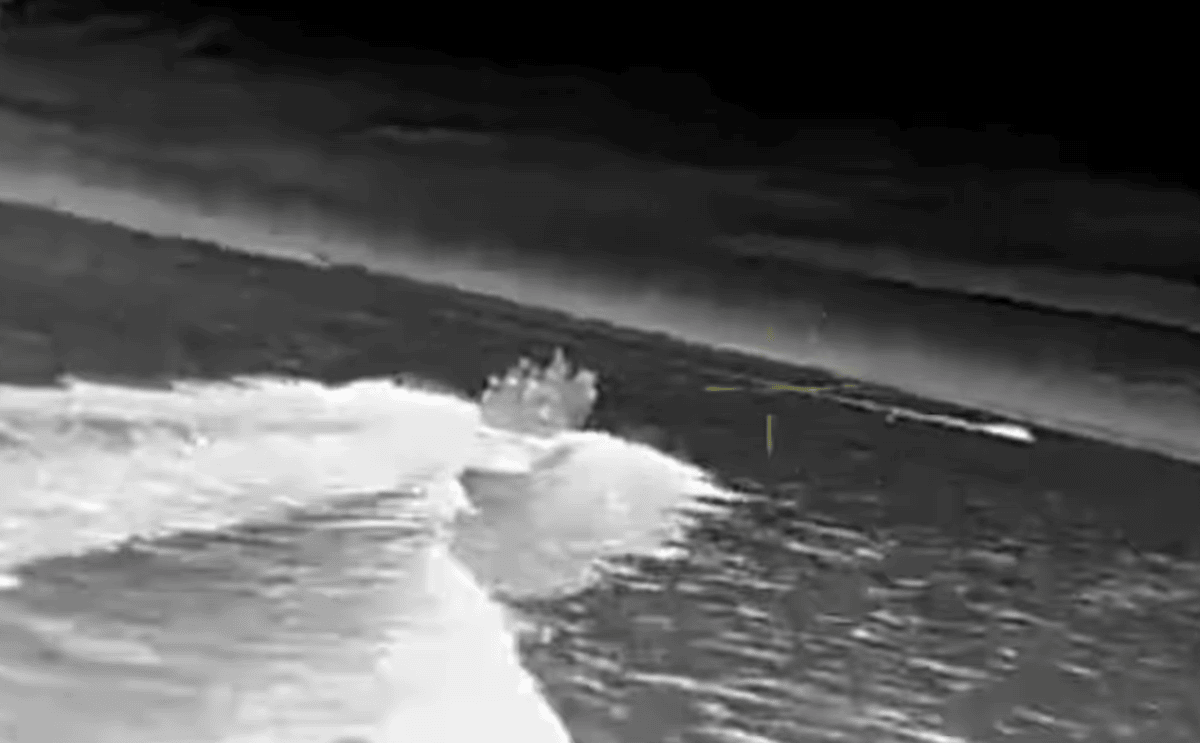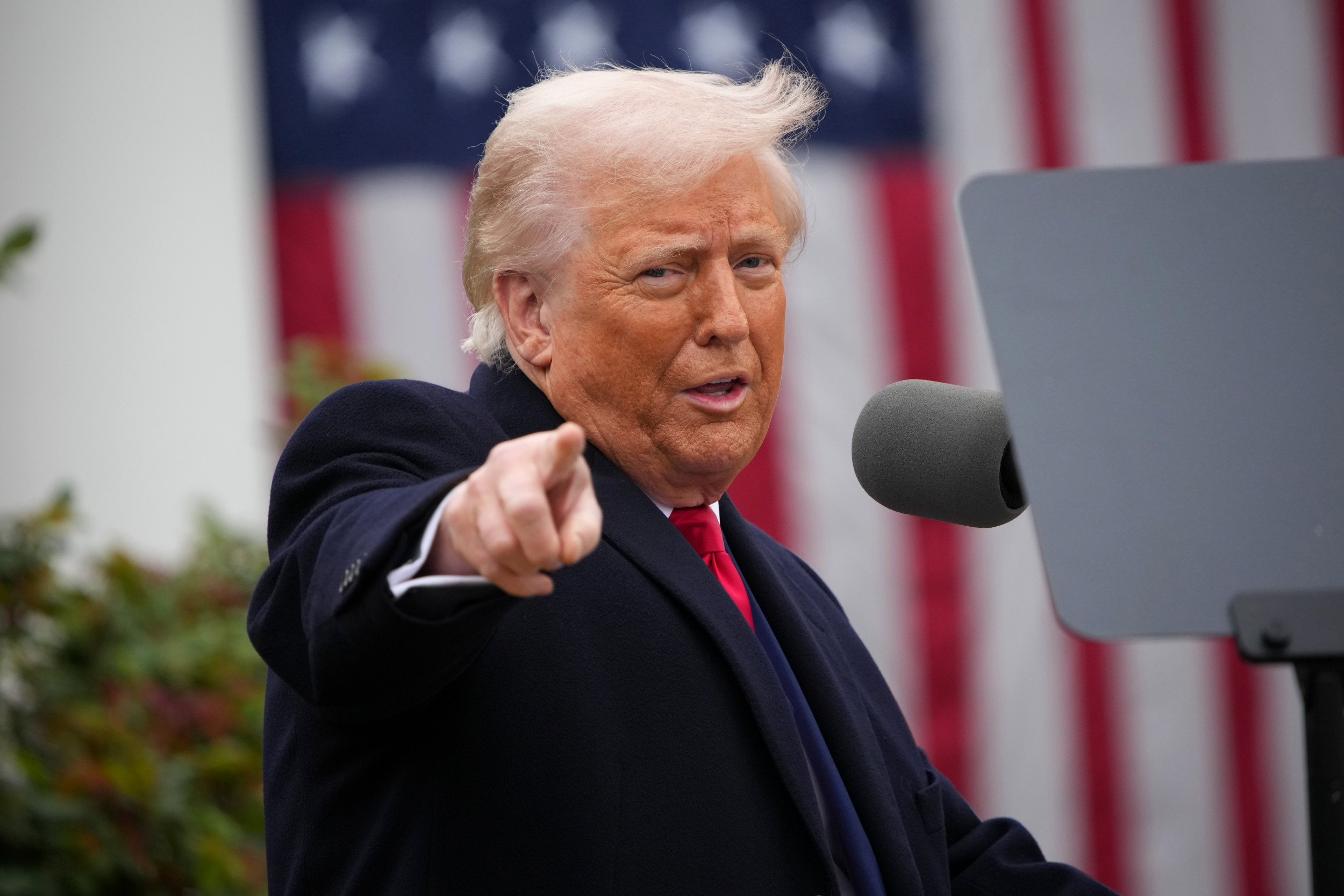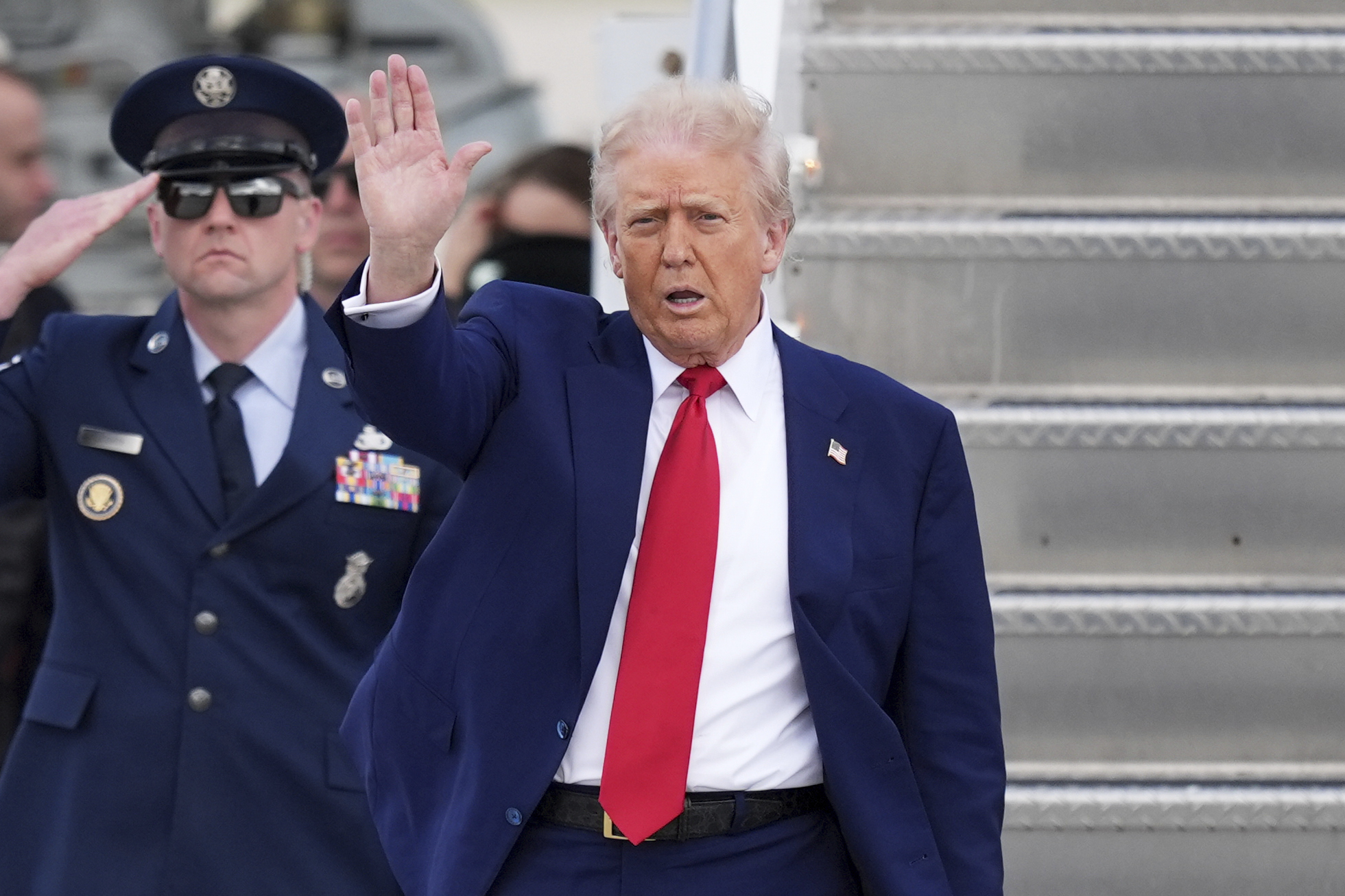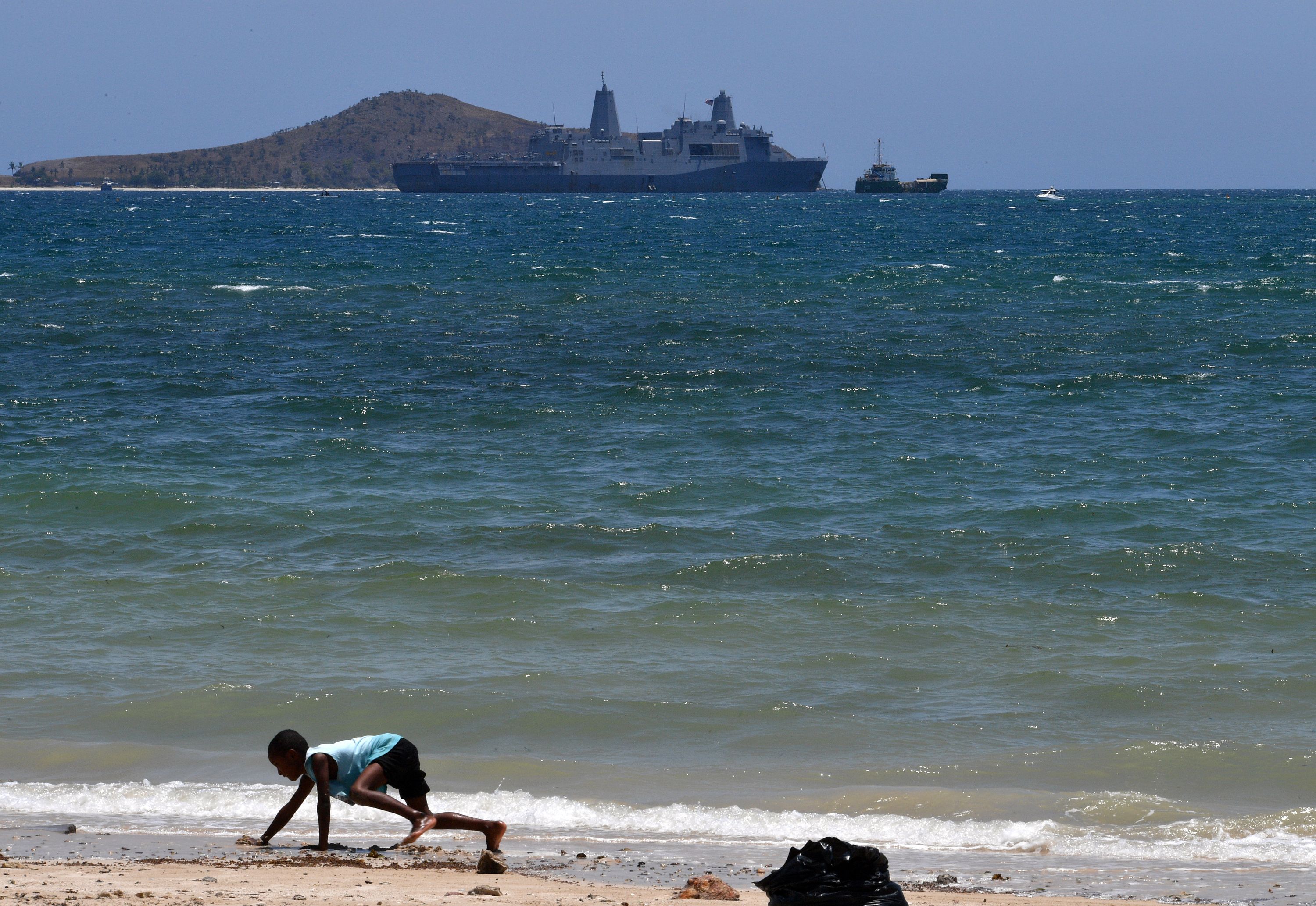"Thanks to its defense industries," Ukrainian President Volodymyr Zelensky remarked back in October, "Ukraine is set to become one of the key global contributors to security and a very strong player in the global arms and defense technology market."
That is certainly Kyiv's vision for its future. "We can be one of the biggest producers of sophisticated weaponry," Oleksandr Merezhko, the chair of Ukraine's parliamentary foreign affairs and a member of Zelensky's party, told Newsweek.
"Ukrainian technologies are going to be required by the world," Kyiv's strategic industries minister, Herman Smetanin, told Newsweek on the sidelines of the Munich Security Conference in Germany in mid-February.
There are many unknowns about what post-war Ukraine will look like, with much depending on how U.S.-backed ceasefire negotiations play out.
One of Russia's conditions for considering inking an agreement is a limit on Ukraine's military might. The Kremlin said in March that Russia wanted to stop military mobilization in Ukraine, and the re-equipping of Kyiv's military.
Meanwhile for Ukraine, exporting its technology to its allies is one of the eventual goals, but officials are clear that defending country's borders comes first. "We need weaponry to survive," Merezhko said.
Ukraine needs a strong defense industry and advanced weapons to make sure it cannot be invaded again, Smetanin said.
Ukraine's Transformation
It took a matter of weeks in early 2022 for Ukraine to morph into what could be termed a "European major power," slotting advanced Western equipment into its mobilized military, said David Blagden, an associate professor of international security and strategy at the U.K.'s University of Exeter.
The war has become an "intense crucible of technological innovation," Blagden told Newsweek.

While Kyiv has leaned heavily on Western support to prop up its war effort, it has been Ukrainian personnel collecting battlefield experience and operating cutting-edge technology that Kyiv's backers have never had to use in a similar way.
While most militaries had waded into developing various types of drones prior to 2022, Russian and Ukrainian use of uncrewed surface, ground and aerial vehicles has revolutionized how this type of technology is used in combat.
The world's armed forces have watched on closely as Kyiv and Moscow have vied to be the most effective at deploying cheap, throwaway explosive drones and longer-range systems able to strike targets hundreds of miles away from their pilots.
The Lived Experience
Ukraine also now has ample expertise in large-scale land operations and how to maintain an extensive air defense network that European NATO states do not have, Blagden said.
European countries and the U.K. have trained Ukrainian personnel across the military, including tens of thousands of Ukrainian soldiers through the London-led initiative known as Operation Interflex.
But British and European soldiers training in eastern Romania throughout February, as part of NATO's largest exercises this year, said they modeled their training exercises on Ukraine's experiences, their tactics informed by how Kyiv fought. British soldiers were among those winding their way around trenches in Romania with designs lifted from the battlefields of Ukraine.
A "huge amount" has been taken onboard from the war in Ukraine, British Army Lieutenant Colonel Harry Waller told Newsweek in eastern Romania.
"Fighting a peer conflict against Russia is what NATO trains for above all else and this is something Ukraine has done for over three years now," said William Freer, a research fellow in national security at the U.K.-based Council on Geostrategy think tank.
Through the more than three years of full-scale war, Ukraine has collected "invaluable" battlefield experience, said Merezkho. "We'll be a huge asset for NATO and for the European Union."
Production Capabilities
Ukraine, through ramping up its defense industry, has managed to lessen some of its reliance on Western aid. Kyiv's defense industry has increased its capabilities thirty five-fold since February 2022, Smetanin said.
Ukraine now produces at home more than half of its military hardware, while it gets roughly a quarter of its military supplies from Europe and a fifth from the U.S.
Speaking in early October, Zelensky said Ukraine had produced 25 times more ammunition for artillery systems and mortars than it pumped out in all of 2022. The Ukrainian leader has said Ukraine could now produce at least 15 new units of its Bohdana howitzers each month.
Europe has struggled to source enough military hardware—especially artillery—for Ukraine, depleting its own stockpiles while struggling to produce replacement equipment or make enough ammunition.
The demand for 155mm shells far outstrips supply. The European Union pledged to deliver 1 million shells by March 2024, but fell far short of this target.
The U.S., which has maintained higher levels of military spending while many of its European allies invested elsewhere, has a much more powerful military-industrial complex. But for Europe, there is the possibility that the continent could look to Ukraine to help replenish its drained stocks.
Ukraine is able to build military equipment at a fairly low cost and on a large scale, Freer told Newsweek.
Ukraine said at the start of the year that it would ramp up its long-range drone and missile programs, buying at least 30,000 drones able to fly hundreds of miles over 2025. Over the year, Kyiv is also planning on having 3,000 cruise missiles and drone-type missiles roll off its production lines, prime minister Denys Shmyhal said in January.
Ukraine is actually capable of producing more than 30,000 of these deep-strike drones, Smetanin told Newsweek in Munich in February. It is also on track to hit a production target of over 10,000 ground drones, Smetanin said.
"We have some more missiles coming that are currently being tested," Smetanin added, speaking via an interpreter.
Ukraine unveiled a raft of new technology at the end of 2024, including sets of missile-drone hybrids. Kyiv debuted its Peklo missile — or "hell," in Ukrainian — and the Ruta, able to travel up to 300 kilometers, according to Ukrainian media reports.
Ukrainian engineers use all the information available to "develop the best missiles we can," Smetanin said.
"Nobody in the world has such experience that our defense and weaponry manufacturers really have right now," Smetanin added.
"They've developed all this expertise and production capacity for these technologies," Blagden added. "If the Europeans want to access that expertise, then it's an obvious place to go."
The Hurdles
But there are several obstacles in Kyiv's way. The war has taken an excruciating toll on Ukraine's economy, distended to prop up the war effort at the expense of swathes of spending across the war-torn society.
Ukraine's "economic situation is now unfortunately tough," Blagden said. Much of the workforce will have spent years in the military, and many of Ukraine's best and brightest will have become war casualties, he said.
Others have settled abroad in areas away from Ukraine.
While it is not yet clear how a ceasefire agreement would come together, it has appeared increasingly likely that Russia may retain its grip on parts of Ukraine that it has captured in the war. As it stands, Moscow controls the vast majority of the eastern Luhansk region and a significant part of neighboring Donetsk, which together are collectively referred to as the Donbas.
The Donbas was Ukraine's industrial heartland, the hub for the country's iron and steel industry prior to 2014, when Russia seized Crimea to the south of mainland Ukraine and backed separatist movements in Luhansk and Donetsk.
Ukraine's defense industry, while hoovering up expertise and refining designs, is still less capable of pumping out some of the most complex equipment, Freer said.
Imported Doctrine
How Ukraine has fought Russia fundamentally clashes with how NATO nations would battle Moscow.
At varying points, Ukraine adopted parts of NATO warfighting strategy, only to run into snags or revert to the more familiar, Soviet-style tactics.
"The Ukrainians have fought the Russians in a very different manner to how NATO would do so, the lack of Ukrainian airpower being the single most important factor," Freer said.
At its heart, NATO doctrine relies on firm air superiority over an opponent, which Ukraine has never enjoyed over Russia.
But NATO is setting foot in a new era, one where the U.S.'s contribution under President Donald Trump has been thrown into doubt as it has not been in many decades. The U.S. is the most significant single contributor to NATO, including with its formidable air force.
Without American airpower, Europe might be able to take more lessons from Ukraine's way of fighting, Blagden argued. While countries like the U.K., France or Germany might have an advantage in the air over Russia in a hypothetical conflict, other NATO members cannot rely on it, he said.
For Poland or its Baltic neighbors within touching distance of Russia, "learning how Ukraine fights Russia is going to be, in some ways, much more relevant than learning how the U.S. would fight Russia," Blagden said.
About the writer
Ellie Cook is a Newsweek security and defense reporter based in London, U.K. Her work focuses largely on the Russia-Ukraine ... Read more




